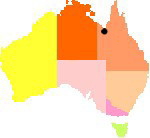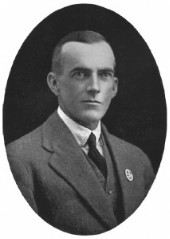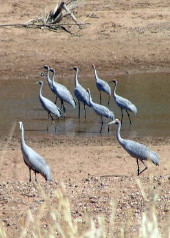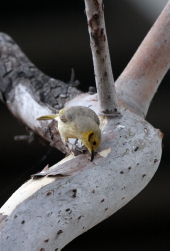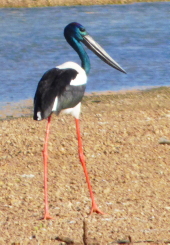William Rae McLennan and Brolgas, Part 1
by Mary Barram and Elinor Scambler
From 1909-1912, Broken Hill doctor and ornithologist William David Kerr Macgillivray financed intrepid collector William Rae McLennan to travel through the Gulf Plains in north-west Queensland, then to Cape York. McLennan, an expert naturalist, collected specimens and made many observations of birds and their habitats, which he recorded in diaries and in letters to his sponsor. The Queensland Museum Network has a project to digitise McLennan's diaries, including from this expedition, currently underway.
Brolgas were not a major target of the expedition: they were common and well-known, and their large size (height to 1.4 m and wingspan to 2.4 m) was not an inducement to collect specimens and send them all the way to Broken Hill from north-west Queensland. But as a keen naturalist, McLennan noted the birds that interested him and Macgillivray, also, referred to Brolgas as 'these fine birds' or 'these graceful birds'. In Part 1 of this series, we present McLennan's encounters with Brolgas in 1910, extracted from pocket-size diaries in the Research Library, Queensland Museum. In Part Two, later in 2022, we'll be joined by co-authors Margie Barram and Rebecca Enright to present McLennan's significant description of a Gulf wetland with over 1000 roosting Brolgas.
Drying river near Burketown, north-west Queensland, May 2018 (Swati Kittur).

Cloncurry & Sedan Dip
In November 1909 McLennan sailed from Sydney to Cairns, from where he visited coral cays with nesting seabirds and the Atherton Tablelands. He then sailed south to Townsville (there was no northern rail link at the time) and boarded a train for Cloncurry. While there he made short coach journeys, exploring 'stony ridges' and creeklines, before 'procuring an outfit' which included two horses and a trap.
The wet season began, rivers and swamps filled, many birds nested and McLennan camped for several months at or near Sedan Dip (a Map is at the end of the page). Some Brolgas were nesting and most were seen in pairs.
| Date | Brolga observations March-June 1910 |
|---|---|
| 1 March | ...went out to the Lake and saw 12 Native Companions feeding there later crossed a small blue bush swamp on which were a couple of Native Companions |
| 14 March | Native Companions (listed) |
| 26 March | Found a Native Companion's nest (2 eggs, Australian Museum O.49520) |
| 31 March | Rode down the top end of big lake in Dalgonally saw a few Native Companions at the edge of the lake |
| 6 June | Corella river, Corella crossing...Saw a pair of native companions - flew past camp at dusk |
| 8 June | 4 Native Companions |
Kamilaroi to Burketown
The wet season over, swamps and rivers were starting to dry out: more Brolgas were seen in flocks. McLennan continued camping on bush lagoons or at cattle station homesteads as he travelled north to Kamilaroi on the Leichhardt River, then north-west to the Gregory River in the Nicholson catchment. Apart from Brolgas, another magnificent large bird he recorded was the Black-necked Stork (see Sidebar).
| Date | Brolga observations June-July 1910 |
|---|---|
| 9 June | Travelled to Donaldson's - Native Companions |
| 15-25 June | Native Companions listed on 4 days |
| 28 June | Saw 2 Native Companions flying |
| 10 July | Lagoons with 20 Native Companions and 20 Pelican |
| 14 July | Struck camp and left for the Gregory River and Gregory Road - camped at a lagoon with a big mob of Native Companions about the edges [1] |
[1] the number in 'a big mob' is unknown but presumably more than 20 (see 10 July)
Some cattle station homesteads were also mail stops for Cobb & Co coaches, from where McLennan sent batches of specimens and what he described as 'full notes', down to Macgillivray in Broken Hill.
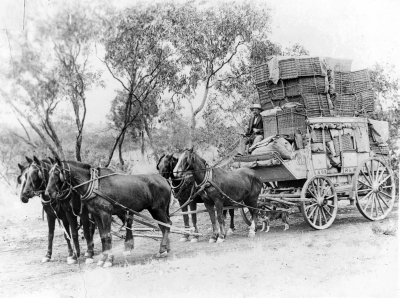
Cobb & Co mail coach, Julia Creek to Cloncurry, 1908. Photographer J. Blackwood, John Oxley Library, State Library of Queensland, 39809 →
Well I had better finish up now as I have the notes to write up...[Signature] PS I only have time to write up one day's notes as the coach is due in a few minutes ... I don't know when I will be able to send full notes along I have not much time to write them up but I must try & do a page a night if I don't it will take me a month to do them.
This was written to Macgillivray on 4 July from Augustus Downs on the Leichhardt River, some 80 km south of Burketown. By this time McLennan had sent 26 clutches of eggs or skins, mostly of honeyeaters and waterbirds, and he collected seven more before leaving for Cape York on the 10 August steamer from Burketown. On 17 July he collected one egg from a Yellow-tinted Honeyeater nest (see Sidebar) near Fiery Downs, 'in thick forest country on one of the roughest tracks I've yet struck' and the last specimen was a male Bar-breasted Honeyeater taken from flowering tea-tree at the Beames Brook Hotel, on 27 July. He arrived in Burketown on 31 July, where he had to sell the horses and trap; he took the time to visit two local residents with aviaries and a 'lake seven miles from the town'. This was probably Harris Lake south-east of Burketown, known for waterbirds. In eight months McLennan had worked through three major river systems in the Gulf Plains bioregion. Most specimens he collected are now in the Australian Museum, with three at Museums Victoria and three in the South Australian Museum.
Cloncurry to Burketown, 1910
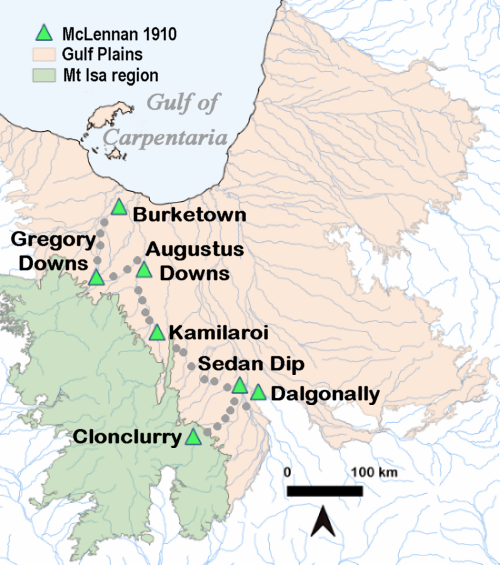
References
We are very grateful to Shannon Robinson, Research Library, Queensland Museum, and Ian J Mason, Australian National Wildlife Collection and oology historian, for assistance with this study.
- Diaries in the Research Library, Queensland Museum
- Letters between McLennan and Macgillivray in the La Trobe Library, State Library of Victoria
- Ian J Mason & Gilbert Pfitzner Passions in ornithology: a century of Australian egg collectors, Canberra, Authors, 2020, pp. 357-64.
- WDK Macgillivray, Notes on some north Queensland Birds, Emu 13(3), 1914, pp. 132-86.
- Specimen records are from the Atlas of Living Australia.
More...
Brolga FAQ 3, dry season habitats and behaviour»

